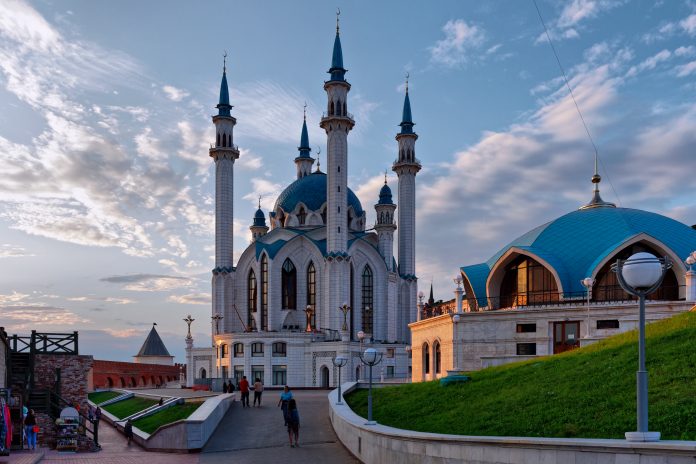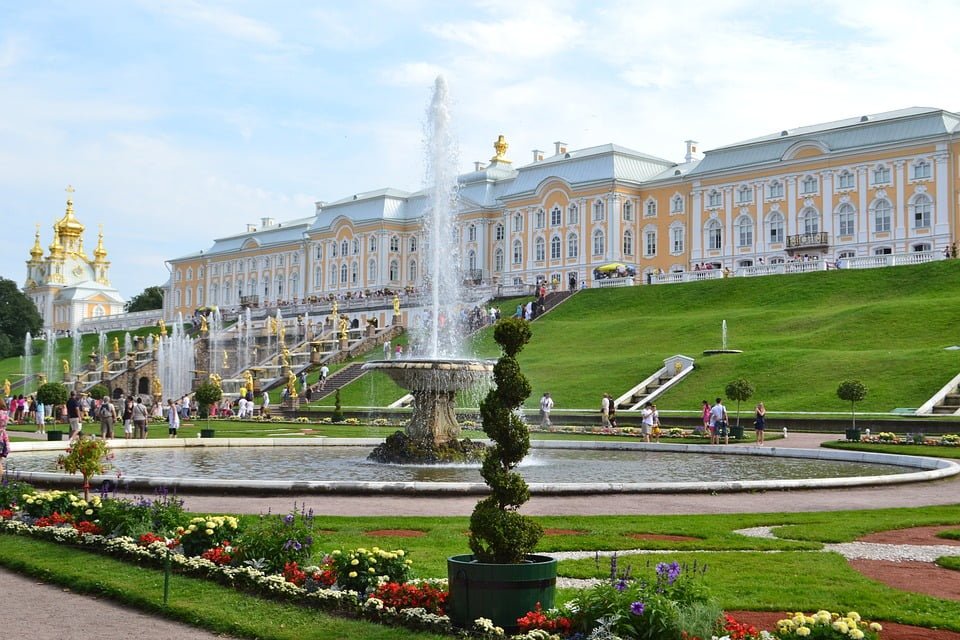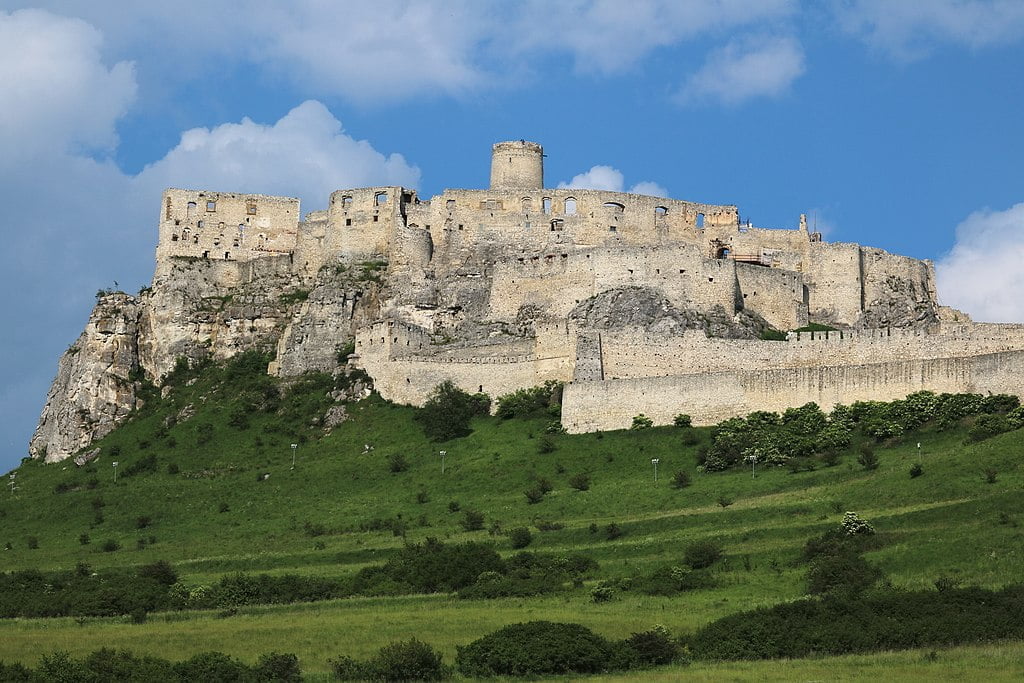Walking into the Kazan Kremlin is like stepping right into the luxurious world of 16th-century Russian nobility. It’s a venture through breathtaking cathedrals, extravagant halls, and awe-inspiring passageways. Kazan is one of Russia’s crown jewels. Below is an extensive history, interesting facts, and the current condition of the castle explained in detail. Let’s take a look:
Table of Contents
The palace’s northern wall has a fortified tower known as the ‘Secret Tower’, which is named such as it was initially used for a secret water supply well.
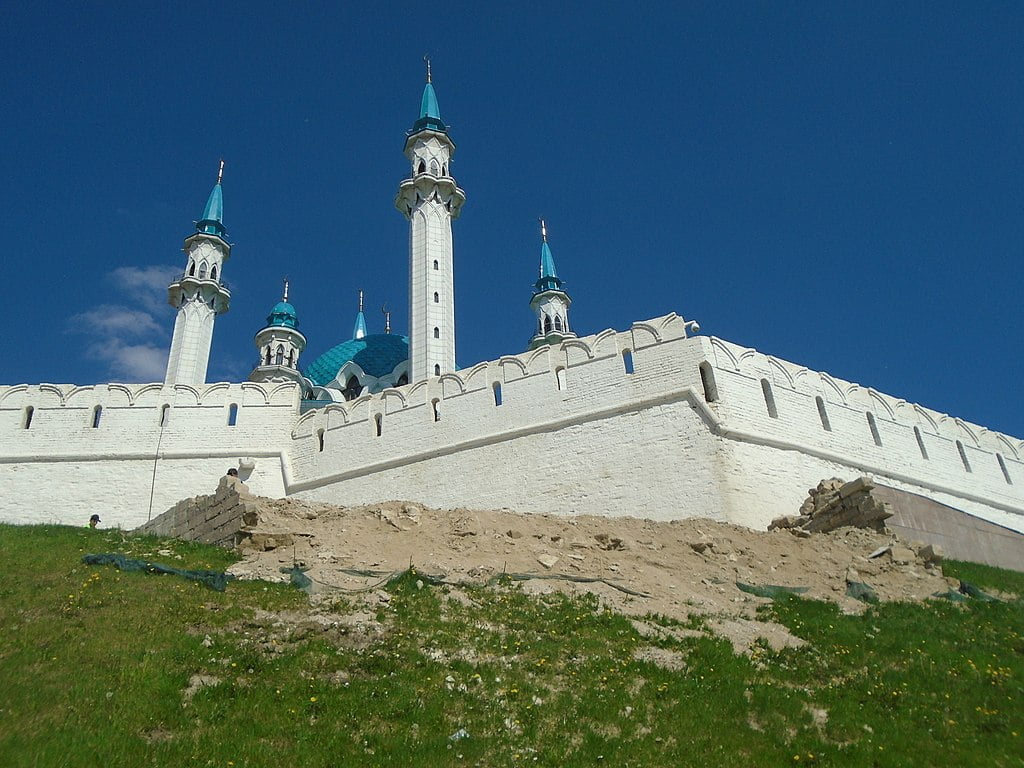
Frequently Asked Questions
Where is Kazan Kremlin Located?
The Kazan Kremlin is located in the city of Kazan in the republic of Tatarstan, Russia.
When was Kazan Kremlin Castle Built? Who Build It?
The Kazan Kremlin was built between the 10th and 15th centuries by the Bulgars.
When is The Best Time to Visit the Castle?
The best time to visit the kremlin is during the warm summer months between May and September. You may also visit in the months of late January to February if you wish to experience a beautiful snow-covered winter wonderland at Kazan. However, the latter is likely to confine your visit largely to the interior rooms of the castle, rather than the frosty outdoors.
What Other Monuments are Located Nearby?
Other monuments in the area include the Ushkova House, the Kazan Virgin Monastery, the Cathedral of the Apostles Peter and Paul, and the Agricultural Palace.
FOR HISTORY | BEAUTIFUL IMAGES | INTERESTING FACTS | TRAVEL TIPS
Early History
Origin and Early Years (10th – 15th centuries)
While the exact origin of the castle is unknown, the castle construction is estimated to have been carried out between the 10th and 15th centuries. The earliest structure of the palace was a fortress built in the Muslim regime of the Turkic warrior tribes known as the Bulgars. The kremlin passed through possession by the Golden Horde and then the Kazan Khanate.
The site seemed very strategic for the construction of a fortress as it was surrounded by water on three sides along with a dense, rich forest and swamps on the fourth side. It was constructed out of pale sandstone, indigenous to the region. When the Kazan Khanate was at its peak, the city expanded and flourished into an expansive trade and craft center, while the kremlin hosted a complex of the Khan’s palace, a mosque, and a tomb.
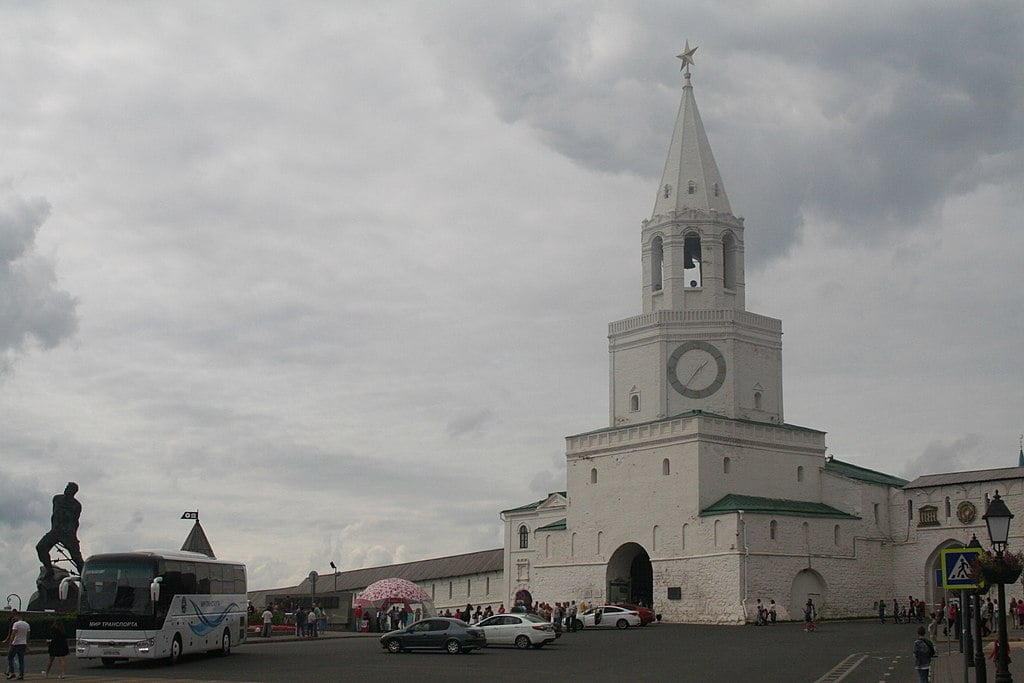
Tsardom and Rebellion (16th – 18th centuries)
In 1552, the Kazan Kremlin was taken over by the grand prince of Moscow, Ivan (later dubbed the Terrible), and was made into the Bishop’s headquarters for the land of Volga. The Tsar dispatched a team of architects from Pskov in order to reconstruct the palace, whose names can still be found in a monument situated close to the Annunciation Cathedral inside the palace’s complex.
The castle turned into a complex with thirteen additional towers connected via a wall. As the Russian Empire grew in the 18th century, the castle’s defensive purpose began to die down and it became more of a center for administrative purposes. As the city became the center of control for the Kazan Province in the early 18th century, the need for castle defense was replaced with administrative requirements … seemingly.
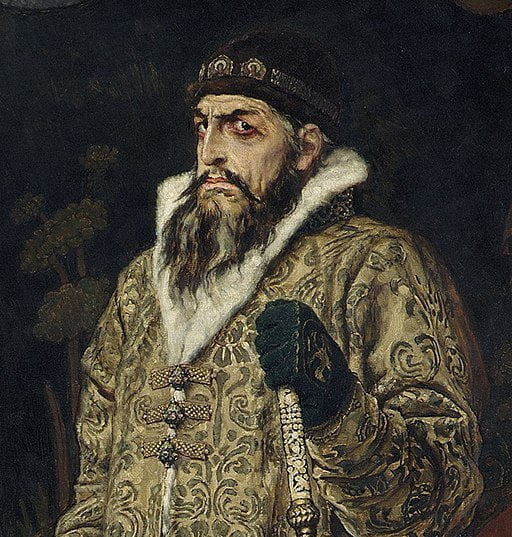
In 1774, a rebellion led by Emelyan Pugachev attacked the castle, shelling the walls and firing cannons at the building while trying to take over the region. The walls managed to remain unharmed, and the rebel was arrested and held inside the castle until his execution.
Later Years (19th century onwards)
In the 19th century, a variety of new compartments were added to the palace’s complex. The Governor’s Palace, the Consistory Palace, and the Junker School were built in 1848. The Suyumbike Tower–which continues to be one of the most famous towers in the region–was constructed around the same time as well.
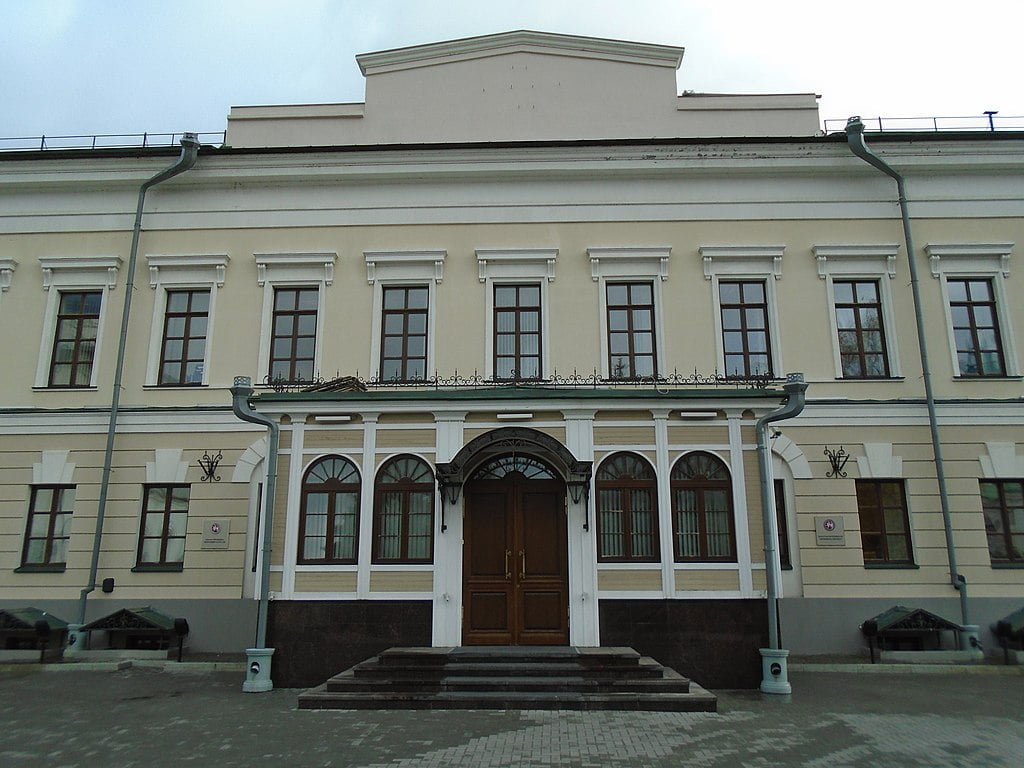
Revisit More Historic Places Below or Read Further
Current Times
During the Russian Revolution in the 20th century, much damage came to the castle at the hands of the Bolshevik forces. They demolished the bell towers of quite a few of the complex’s cathedrals, along with various relics of historical significance. In 1920, the castle became the administrative center for the Socialist Tatar Republic and the city served as a refuge center during the Second World War. Due to a shortage of residential buildings, administrative centers and museums were used to host refugees inside the Kazan Kremlin.
After the war, the buildings of the palace were in an awful state and remained so until the end of the 20th century when the Kazan Kremlin Museum-Reserve was founded. Once it was established in 1994, renovation and reconstruction efforts for the castle started on a large scale and are ongoing today.
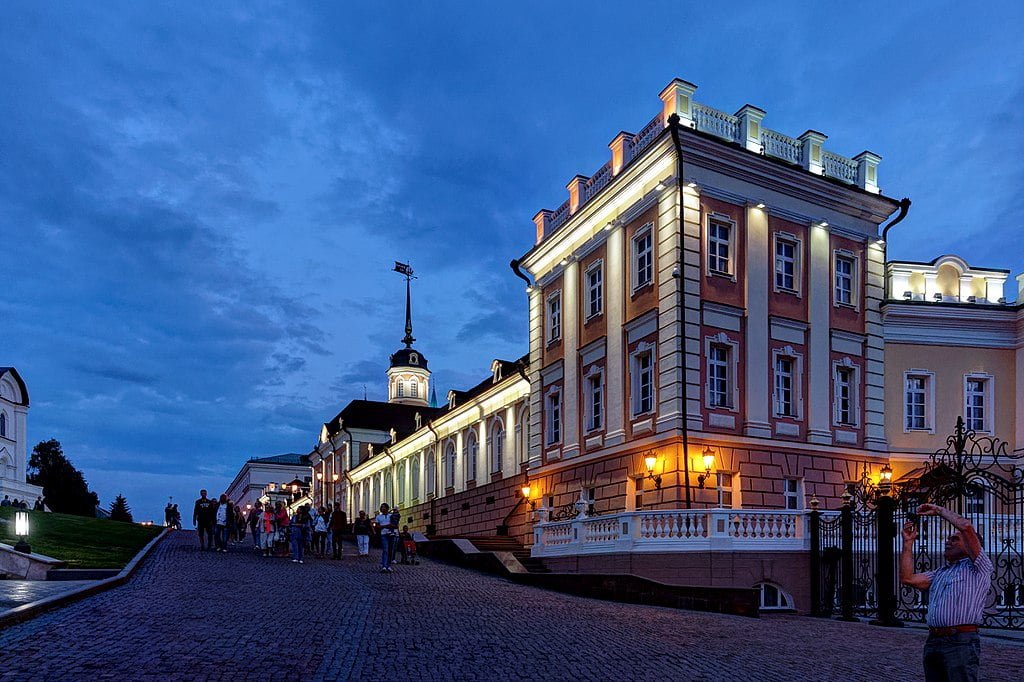
The Kazan Kremlin has been part of the UNESCO World Heritage List since 2000. It continues to serve as an administrative center even today, with the presidential residence for the Republic of Tatarstan being located inside the complex.
Today, the Kremlin houses a number of popular museums open for public access including the Museum of Islamic Culture, the Museum of Natural History of Tatarstan, and the Museum of Cannon Yard. Smaller museums are also located at the Annunciation Cathedral, the Manege Exhibition Hall, and in a branch of the State Hermitage Museum.
Currently, the castle serves as the presidential residence as well as a popular tourist spot for the public with many museums, towers, and luxurious halls for visitors to tour.
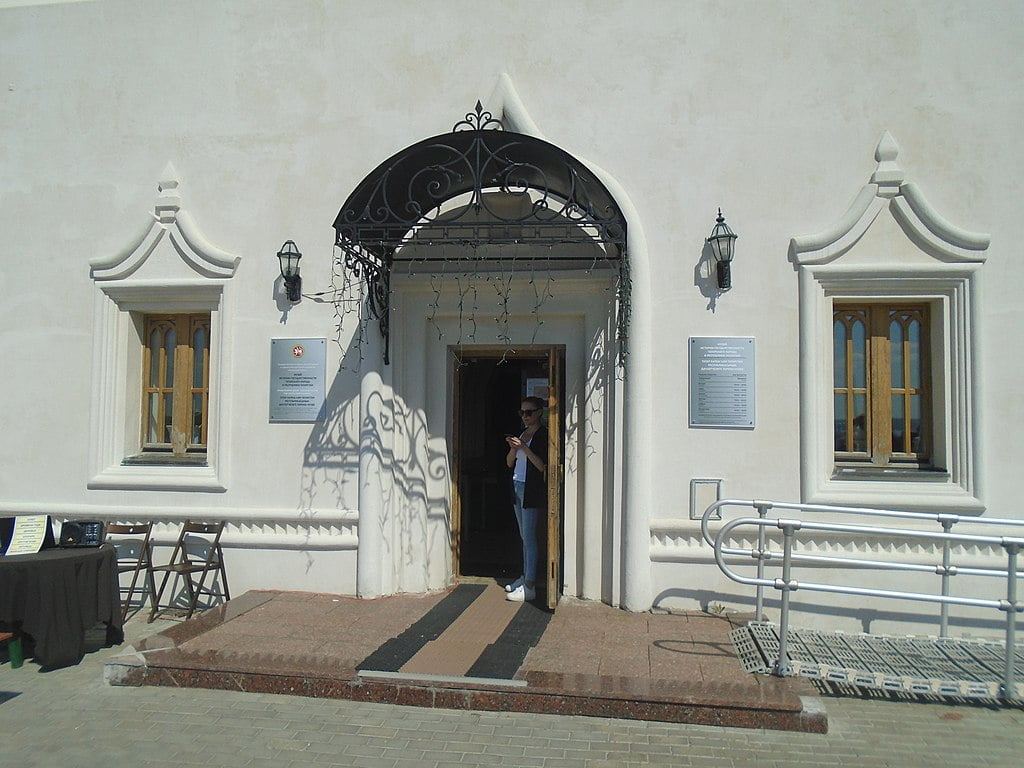
Interesting Kazan Kremlin Facts
- The palace’s northern wall has a fortified tower known as the ‘Secret Tower’, which is named such as it was initially used for a secret water supply well.
- One of Europe’s largest mosques, the Qolşärif Mosque, was inaugurated in 2005 based on the location of the principal mosque of the Kazan Khanate inside the Kremlin.
- The name of the Spasskaya Tower is based on the Spassky Monastery, which used to be situated in the proximity of the tower.
- The presidential residence is believed to be located at the site where the former Khan’s palace was situated during the Kazan Khanate.
Visiting Kazan Kremlin – Tips and Tricks
From gorgeous architecture to mesmerizing views of the Volga River, the experience of a lifetime awaits you at Kazan Kremlin. Here’s everything you need to know about getting there:
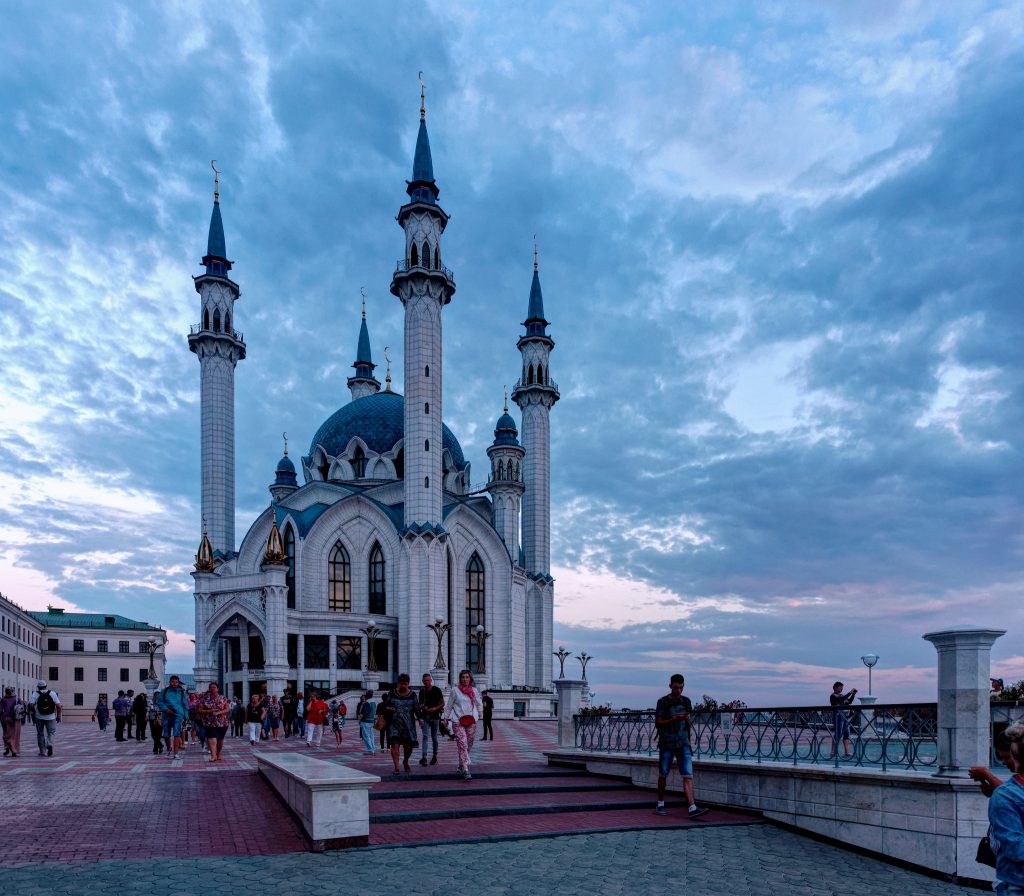
How to get to Kazan Kremlin?
You can get to the Kazan Kremlin from Moscow via air, bus, train, or car. If you opt to travel via bus, you will board from Kitay-Gorod and get off at Kotel’niki after a 37-minute ride. From there, you’ll board a bus from the Moscow Kotelniki Bus Station all the way to Kazan’s Stolychny Bus station, where the castle is a 4-minute taxi ride away. The whole journey will cost you between €25-€52 ($26-$54 USD) and take you approximately 16 hours and 40 minutes.
By plane, you can take a direct flight from Moscow Sheremetyevo to Kazan. The journey will cost you from €26-€257 ($27-$270 USD) and take you a little over 5 hours.
Alternatively, you can take the night train. You will board from Moskva Kazanskaia and ride it directly all the way to Kazan overnight. From the station, the Kremlin is a 27-minute walk. The journey will take you a little over 11 hours and cost you between €28-€48 ($29-$50 USD).
Another way to get to the Kazan Kremlin is via car. This can be done by either renting a car and driving there or using rideshare services. The rideshare service would take you a couple of hours longer but since it is a long drive with high fuel costs, it would be more feasible. The journey will take around 13 hours and cost you approximately €15.5 ($16 USD).
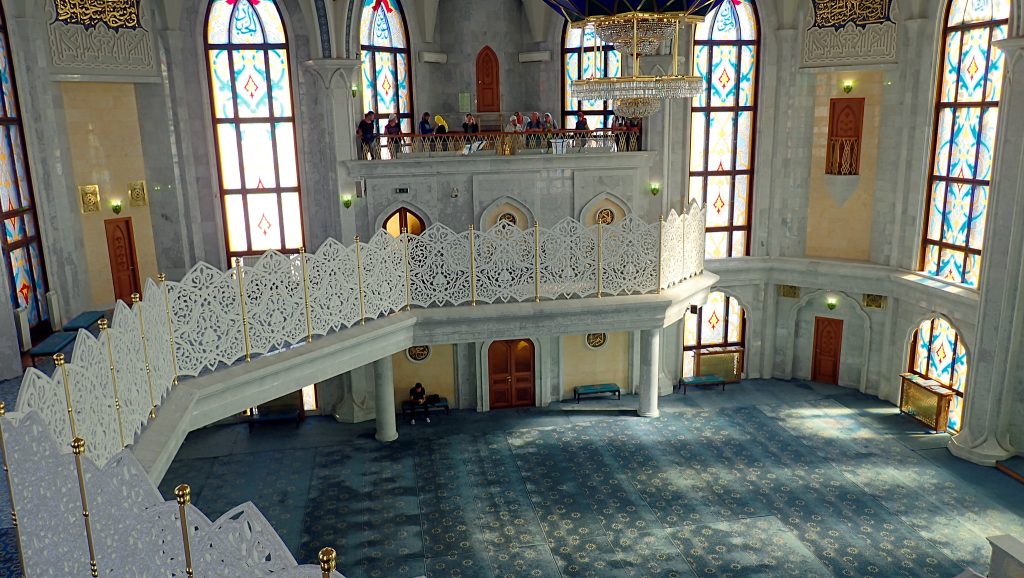
Ticket Prices, Visiting Hours & Travel Tips
The complex and many of the attractions are accessible everyday, but the museums are only open from Tuesdays to Sundays, 10 A.M. to 6:00 P.M., with the exception of Fridays, when the museum opens at 11:00 A.M. and closes at 8:00 P.M. Mondays are off-days for maintenance.
During peak tourist season in the summer, it is highly recommended to purchase tickets in advance to avoid delays due to high demand.
You can purchase a single ticket for €12 ($13 USD), which would cover all the museums, while the rest of the complex and towers can be explored for free. Admission into The Qul Sharif Mosque and the Cathedral are also free of charge.
How Long Will It Take to Tour Around?
The Kremlin can be toured in 3-4 hours but it’s recommended to devote a whole day in order to fully explore the city along with all its historical attractions.
Up to Date Information
For up to date ticket prices and visiting hours visit the official website: https://dspkazan.com/en/tourist-attractions/kazanskij-kreml/
Some words of advice and tips:
- If you’re an archeology or natural history enthusiast, the Tatarstan Museum of Natural History is highly recommended.
- All the attractions in the complex are within walking distance of each other, so you need not rent a car or vehicle.
- Make sure to try the delicious local Tartar cuisine.
- Mondays are closed days in most Kremlin museums.
- Combine your visit with a guided tour of the city and take a walk around the nearby Bauman Street to experience the Tartar history and culture while taking a refreshing stroll.
- Guided tours in English are available, but you will have to notify them in advance.
- Several of the structures in the castle are not wheelchair accessible.

